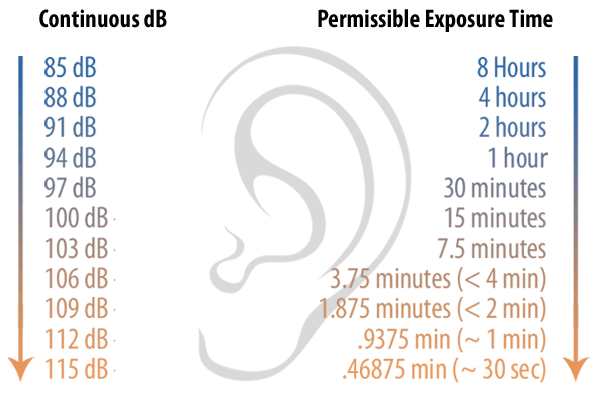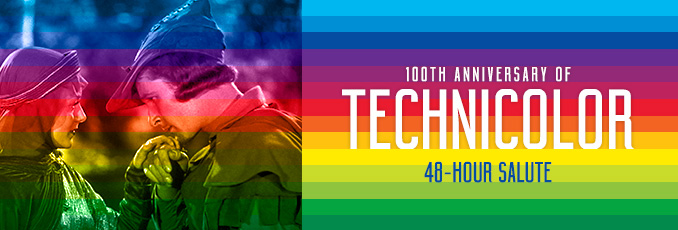The article mentions that the noise levels exceeded 130 dB. The court documents are a lot more nuanced and interesting. (). 85 and 87 dB(A)Lepd were mentioned as much as 137 and 140 dB(C), and the all important phrase upper exposure action level (EAV). Makes us remember that this is what in the States is called a Workman’s Compensation Claim.
Notwithstanding, the 120+ levels are quite loud considering that the scale for sound is logarithmic. A 10 dB increase in sound intensity corresponds to multiplying the energy of the sound wave by 10. If a normal conversation is about 70 dB, 80 dB is 10 times the energy, 90 dB is 100 times, 100 dB is a 1,000 times…so, at 130 we are talking about a million times the energy. 140 is incomprehensible.
The perceived level increase is a little different. Each 10 dB increase seems to only double the sound level. Thus, 70 to 80 is 2X, 70-90 is 4X, 70-100 is 8X, etc. This applies to only a small section of the audio range though. The apparent loudness of the low and high end are different. But still, BEYOND LOUD. In comparison, typically a talking based movie will hover under the 85 dB area, and a thriller will have the dialog sections in the 85 dB range and excitement in the 90s. (We abbreviate the technical measurement extensions like (A) and Le, etc., on purpose for the reader’s sanity.)
One would suppose that a person in that condition – a professional orchestra musician – is used to much higher levels and perhaps the apparent level going up and up was a frog in boiling water effect. It can’t have been his first time. If it was, a person would just run away from such a cacophony. Their argument was that he was placed in this position by the orchestra leader who is a representative of the Royal Opera House, and thus the RoH has the liability.
Why wasn’t a professional wearing earplugs designed to mitigate the problem? This is commonly done by engineers and musicians. Indeed, the court documents says he was. Perhaps even custom molded earpieces wouldn’t have handled those levels completely though. They can be bought for $20 to $400, and achieve level drops of 20-25 dB…again, not insignificant, but dropping from 140 dB to 115 sustained blasts is still LOUD and injurious. Not potentially injurious, actually able to weaken a person’s little cilia – those hairlike structures whose job it is to translate their bend and flow inside the inner ear into what we shall hear. Given loud doses over a sustained period or extra loud blasts changes injurious to damaging. The hairs break. All vertebrates except for mammals are able to grow those hairs back. Unfortunately, the science for regrowing hairs in mammals is in its infancy. (See: )
And it isn’t as if the orchestra pit at the Royal Opera House can be made bigger to accommodate a larger space between musicians. And in addition to the space problems for the musicians, certainly a pit is going to have acoustical problems. But it isn’t like someone can sign a contract to become a slave, or otherwise destroy themselves. He could have walked out, in the same way he would have if the conductor had ordered him to smash his other instrument, the violin. Unfortunately, musicians are made to sign waivers for each gig. Sign, or don’t play. So, if you are asking yourself it this applies to cinemas, this is not the same issue. There are issues, and these touch on tangential situations, but this isn’t the same.
There is more to find here. But the discussion as to whether this effects the cinema business deals with whether it is an employee issue and/or an audience issue.
Levels in the cinema are designed for max headroom at 105 dB, but levels that loud should be rarely reached, if ever, and even much lower levels only intermittently. Generally, audio for cinema works around the 85 dB area.
Briefly, levels set by organisations like OSHA – the Occupational Safety and Health Administration – are basically designed for workers in factories, setting a certain level that can be tolerated for a daylong exposure, then setting a levels and permissible exposure times in 3dB increments. The sad story is that these were designed in an age when the result was a balance of the employers need to churn out product and a workers need to be able to hear only the frequencies of the spoken word after a lifetime of exposure. [Editorial Note: Zounds!]
This is a chart showing from DangerousDecibels.org. 
There have been discussions about loudness and apparent loudness in the cinema exhibition and technical community since forever. There is a lot of underlying data that needs to be gathered and analysed. But Standards groups like SMPTE and AES are composed of volunteers and a project that really tackled loudness would need a lot of sponsors for such, and a lot of time. Plus there are considerations that these groups are in the business of getting equipment to work well together and not in the business of designing human-oriented mandates.
Cinemas themselves are cognisant of complaints and regularly turn down the volume to the point where people now can’t understand dialogue – an effect that refers back to the perceived level mechanisms that human hearing systems use to translate audio from sound waves to impulses in the brain for processing. Low frequencies are perceived differently than the dialog frequencies when the mix level is arbitrarily modified, that is, modified without compensating the level of different octaves differently as the general level is turned down.
Again, it is complicated. Even the general statement that a cinema is tuned to have an upper limit of 105 dB has caveats. Which relates back to ongoing work in groups like SMPTE and the AES. Underlying specifications and recommended practices such as “How to Measure” and “Where to Measure From” had to be developed first. Some documents like the new Pink Noise specification and theTC-25CSS B-Chain Frequency and Temporal Reponse Analysis of Theatres and Dubbing Stages took years of analysis to get 1,000s of details correct, and all to serve as a basis for further work.
Why does it take so long? In addition to the incredible nuance, the process relies upon the available time of volunteers and their ability to fit a lot of testing and research and writing into their work schedule. (Writer’s Note: How well I remember that day with a laboratory setup in an auditorium where 80 different versions of digital pink noise was tested for a day!)
Veering from engineers, try explaining to a non-technical employee how measuring 105 dB in the centre of a room presumes a different number closer to the speakers, and the inability to give that number without going into, “Well, there’s an inverse ratio measurement that needs the distance and we’ll have to hypotenuse the angle for the height of the speakers to the audience position in the front row which is different than to those where the speakers are pointed…” Right…come back when you can show me a graphic.
In the end, no. This judgement has nothing directly to do with cinema. It is a horrible situation that Musician’s Unions and Live Performance Halls are going to have to deal with. But, what we know about these things from past experience are that Cinema spaces get rolled into studies that are done about those places – sports stadiums and disco bars (if there still such a thing as a disco bar?). Ultimately cinemas should be considered differently…again with caveats…since they are tuned and monitored by professionals who know how to create a safe space, and which also have employees who look to see that the levels are not messed with in the meantime.
That, of course, doesn’t mean that this isn’t another dot that the hyperbole crowd will use to connect anecdotal evidence to make an issue out of some past or future showing of what many would consider a far too loud Michael Mann movie.
So: Caution. Train. Be Aware.
…oh, and join and participate in SMPTE and the AES.

